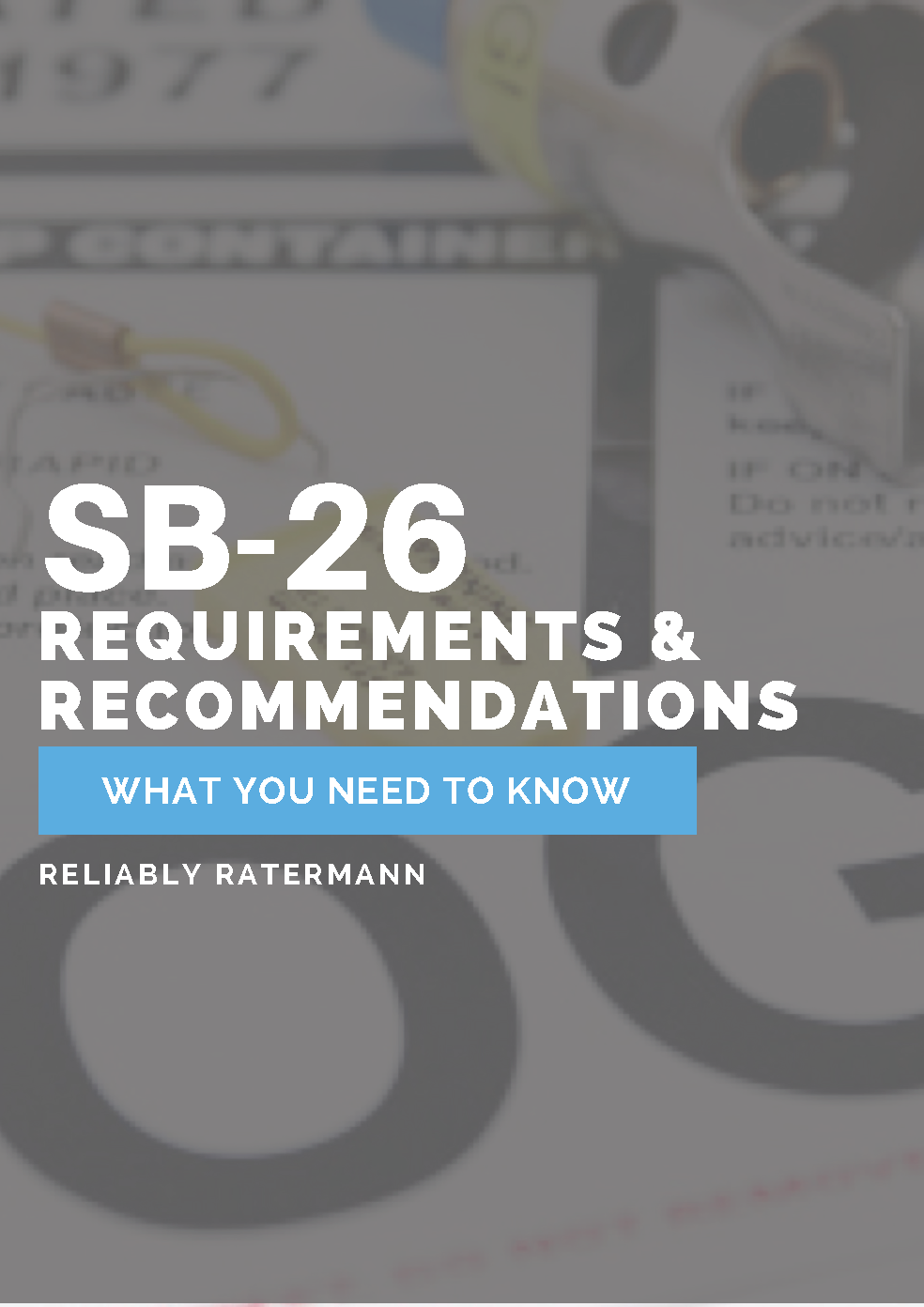Ratermann Learning Center
A hub providing relevant information and updates on industrial gas, cryogenics, and CGA regulations, as well as industry specific solutions for fill plants, beverage distribution and medical gas supplies.

By:
Ratermann Manufacturing Inc.
February 27th, 2019
Why Number Medical Labels? If the FDA audits a company, the company would need to be able to communicate how many labels they have used, how many they have in process that day and how many they have in storage. As a part of the inventory process it is a requirement to keep a log of labels used. By having the labels sequentially numbered on the back of the labels is a great aide in helping companies guarantee how many labels were printed per roll and how many are left on that specific roll. When a company receives rolls from the label supplier they can verify the individual count of each roll and tally total numbers being added to they inventory quite easily by reading the numbers on the backs of the labels. Serializing labels can also be a good check and balance for that day’s activities to say they started with label number “x” and the roll now shows we have “Y” labels left . It allows a company to see the log sheet, for example, “ I used X-Y labels today so I accounted for everything.” There is no requirement to have this sequential numbering on the backs of the labels, it is purely up to each company to define the practices they want to adopt for accounting for these labels, the sequential numbering is simply a tool companies can use as a checks and balance process.

Cryogenic Corner | cryogenic equipment | videos
By:
Ratermann Manufacturing Inc.
November 2nd, 2017

Refresh your understanding of the critical preventive measures that have been shown to save lives by subscribing to our blog for a free download of our guide: Ratermann's guide to SB-26 & our reccomendations to prevent gas mix-ups.

Cryogenic Corner | cryogenic equipment | Fill Plants | taylor-wharton
By:
Ratermann Manufacturing Inc.
October 19th, 2017
1.Ensure threaded end of valve body is clean and free of any debris 2. Place end of locking bracket over end of outlet valve. 3. Tighten the CGA fitting finger tight. The formed square section of the locking bracket must be guided to slide over the valve body. 4. Insert an Allen wrench into the center of the CGA fitting and tighten the connection into the valve body thereby pulling the locking bracket over the valve body. 5. The connection is installed and ready for safe use 6. If desired, pressurize connection and spray a liquid leak detector into the sight windows and look for leaks. How to Porperly Remove a TPG Place blade on the saw in between the end of the bracket and the fitting body. Cut down completely though the fitting body. The gap will act as a guide for the blade. 2. Grasp the locking bracket and pull straight out over the remaining fitting stud. If necessary, gently tap the bracket off with a hammer. The clutch mechanism will fall apart allowing the locking bracket to be removed. 3. Place a pip wrench on the remaining stud and remove the partial fitting, leaving the thread of the valve body intact for replacement with the TPG device. 4. The CGA fitting, locking bracket and clutch mechanism will be completely unusable.

industrial gas supplies | Beverage Solutions | Cryogenic Corner | Fill Plants
By:
Ratermann Manufacturing Inc.
October 19th, 2017
Atmospheric gas packaging is a growing technology that is done by manipulating gases to remove oxygen from a high barrier or permeable package. It is achieved by using inert gases including nitrogen, carbon dioxide, and exotic gases such as argon or helium to inject and remove multiple times to eliminate until the oxygen is eliminated. It is also known as modified atmosphere packaging, protective atmosphere packaging, reduced oxygen packaging, and gas flushing.

Medical Gas Supplies | industrial gas supplies | Fill Plants
By:
Ratermann Manufacturing Inc.
August 24th, 2017
George Ratermann explains the importance of SkillsUSA and the effect it has on our industry..

Medical Gas Supplies | industrial gas supplies | Fill Plants
By:
Ratermann Manufacturing Inc.
March 3rd, 2017
Ratermann's Guide to SB-26 *This guide was made by Ratermann Mfg. not the CGA. Products shown are Ratermann Manufacturing's recommendations, the CGA does not recommend or endorse any specific products.